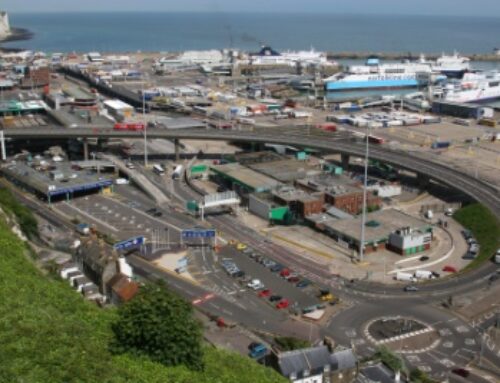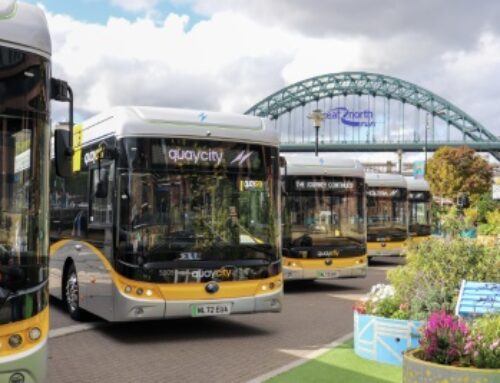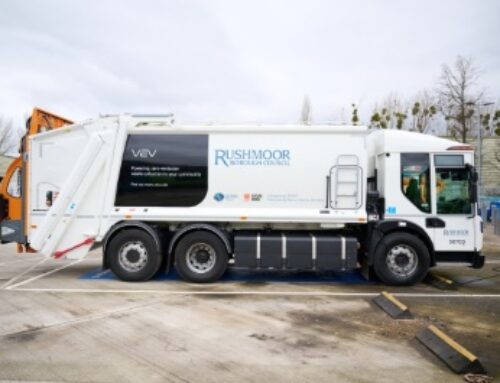Southampton abandons clean air charge for trucks
 Operators sending trucks into Southampton docks no longer face the prospect of clean air zone (CAZ) charging, after the city council reportedly dropped plans to introduce a charge of £100 a day for pre-Euro 6 trucks entering the city in favour of other measures.
Operators sending trucks into Southampton docks no longer face the prospect of clean air zone (CAZ) charging, after the city council reportedly dropped plans to introduce a charge of £100 a day for pre-Euro 6 trucks entering the city in favour of other measures.
These are understood to include greater regulation of buses and taxis, together with the introduction of newer vehicles.
The alternative measures are budgeted at £2.9 million, and the city council expects this to be provided from the government’s CAZ Implementation Fund and Clean Air Fund.
Hauliers had been very concerned about Southampton’s original plans (Transport Operator 74). South coast haulier Andy Dean had said the planned £100 a day toll would effectively stop operators from updating their fleets as it would destroy the residual value of non-compliant trucks while inflating that of newer, cleaner vehicles.
“I’m glad the city council saw sense,” he told Transport Operator after hearing the news.
“The tolls would have been catastrophic for Southampton. Sadly, it won’t stop lorries getting picked on… as soon as the news was announced, one of the local radio presenters was making sarcastic remarks about it being OK for dirty lorries to continue to come into Southampton, but this is still very good news for us.”
Besides local hauliers, tourist attractions and other businesses on the Isle of Wight had also been opposed to the measures, fearing that they would keep coach operators away from the island, and also impact on the 100 trucks a day making the crossing from Southampton to East Cowes via the Red Funnel line.
Rebecca Kite, environmental policy manager at the Freight Transport Association, said: “While the logistics sector is fully committed to reducing its environmental impact, it is of the utmost importance that any air quality scheme reflects the unique needs of each place.
“The proposed charging CAZ would have brought thousands of businesses and operations into its scope, causing operating costs to soar and irrevocably damaging its local economy. Most worryingly, the bustling Port of Southampton, which is UK’s second largest container terminal, would have been included in the zone.
“This is extremely positive news for local businesses and those regularly using the port. The decision recognises the importance commercial vehicles play in keeping the city’s economy thriving –delivering the goods and services businesses need to operate – and FTA is pleased these vehicles are not in line to receive heavy fines.
“FTA is looking forward to working with the council to develop a series of non-charging measures. While the logistics sector recognises the role it must play in improving air quality, it is important that all types of vehicles are taken into consideration when designing an air quality plan.
“The council recognised a [charging] CAZ was not the most effective way to achieve improvements in air quality; we hope other cities learn from this decision and adopt the same common-sense approach.”
Road Haulage Association chief executive, Richard Burnett, said the decision was a massive win for the industry and would come as a huge relief to hauliers who operate in the city.
“Southampton has made the right decision dropping a charging CAZ scheme that would have put businesses and livelihoods at risk,” he said.
“This sends out a clear message to town halls across the country that CAZ schemes are a flawed concept – they’re short-sighted and anti-business. This is a victory for common sense.”
In Yorkshire, however, Leeds City Council has announced that the government has approved its plans for a CAZ, which will see pre-Euro 6 lorries, buses and coaches pay £50 per day to enter parts of the city.
Richard Burnett said: “Charging pre-Euro 6 HGVs to enter the clean air zone is simply a punitive tax on the industry sector that Leeds relies on to maintain its economy, and local businesses will inevitably be put at risk.
“The goods still have to be delivered and there’s a strong possibility that there will be a considerable increase in van traffic. However, it takes approximately 20 vans to move the same amount of goods as one HGV so how will that improve air quality? This is yet another example of the government and local authorities using a sledgehammer to crack a nut.”











